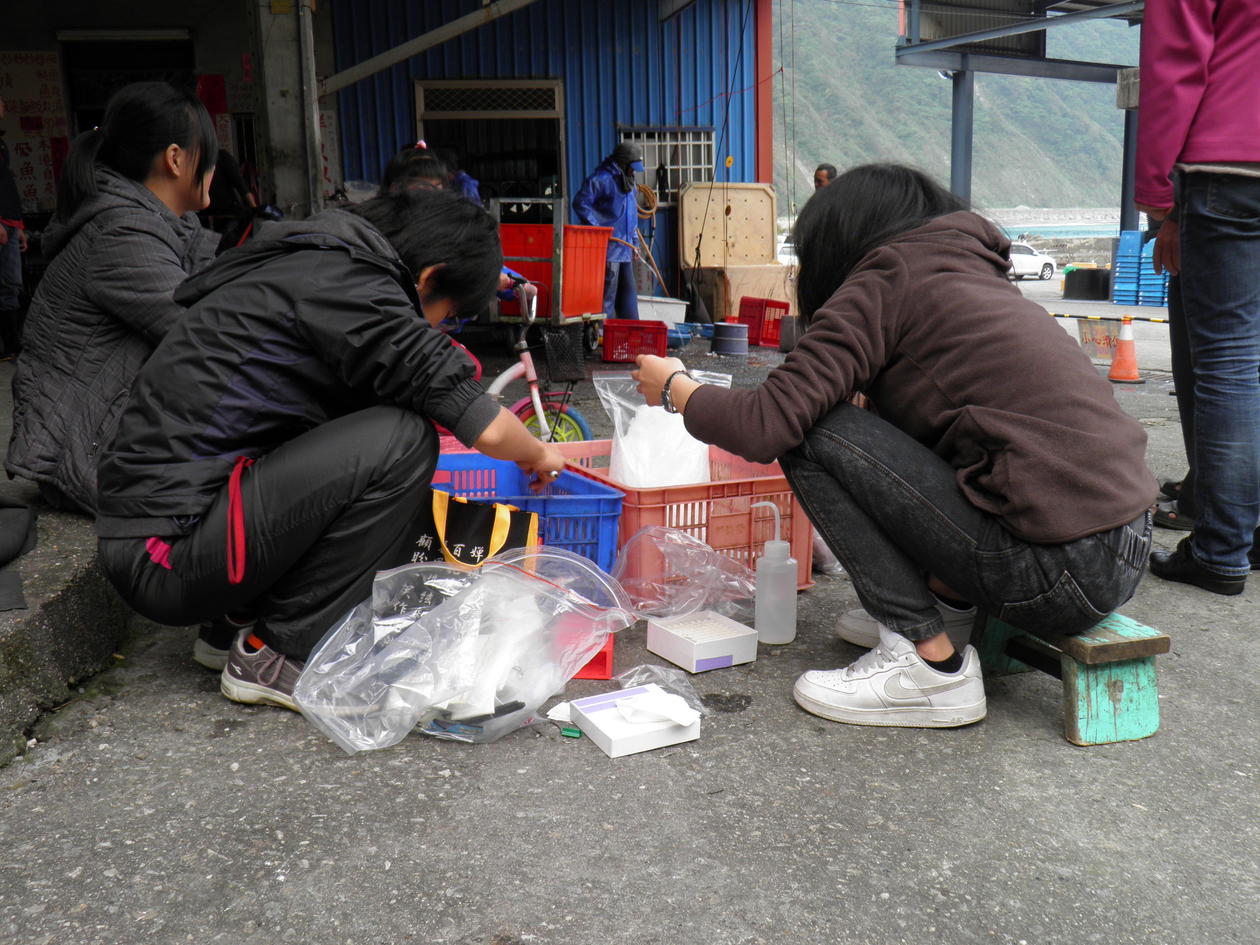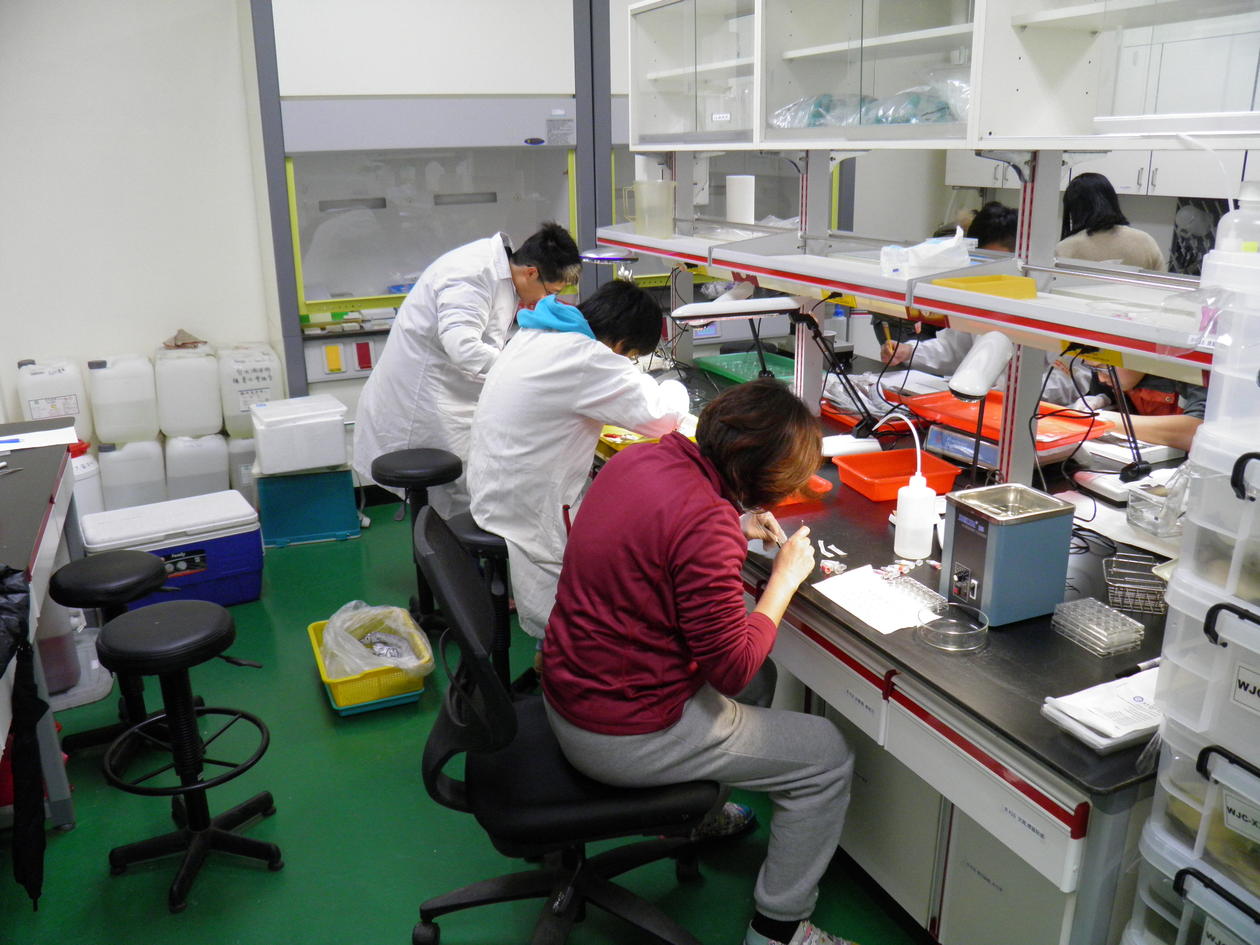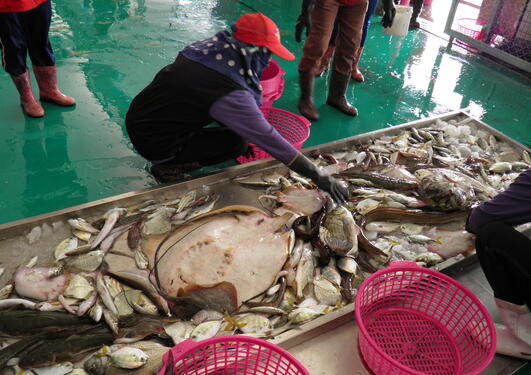Sampling cutlassfish in Taiwan
Fisheries on cutlassfish in Taiwan are landing several, superficially similar species. Researchers at the National Taiwan University are figuring out the relative importance and population biology of different species. EvoFish is following how this fascinating investigation is unfolding.

Main content
Researchers have only recently started to appreciate that what is commonly referred to as the largehead hairtail, Trichiurus lepturus, is actually several species. Prof. Hui-Yu Wang from the Institute of Oceanography, the National Taiwan University, is leading a project to figure out what is being fished in Taiwan and what is the population ecology of the main species. I have had the great opportunity of following this research, joining the field sampling as well as contributing little bit to the data analyses.
The species shown in the figure above are easy to distinguish from each other, but Trichiurus japonicus is very similar to Trichiurus lepturus, and genetic methods are needed for reliable identification. Results so far suggest that Trichiurus japonicus is by far the most important species, followed by Trichiurus nanhaiensis. Trichiurus lepturus and Tentoriceps cristatus are of minor importance. Nevertheless, everything continues to be reported as Trichiurus lepturus. Also FishBase continues to lump the aforementioned Trichiurus species as Trichiurus lepturus.
Sampling is done by visiting fishing ports where cutlassfish are landed. Researchers from NTU have agreements with some skippers to record specific capture location and dedicate part of the catch for research. In other cases, the researchers have to compete with other buyers to secure samples.
At the landing site, fish are ID'ed and tissue samples are taken for later genetic analysis. The fish are then shipped to NTU in Taipei for later analyses.
At NTU, fish are measured and weighed. Sex and maturity stage are determined by examining the gonads, and female gonads are preserved for measuring the egg size. Otoliths are extracted for age reading. Genetic markers are used to confirm the species identity (important for spotting an odd Trichiurus lepturus among the similar looking Trichiurus japonicus).



